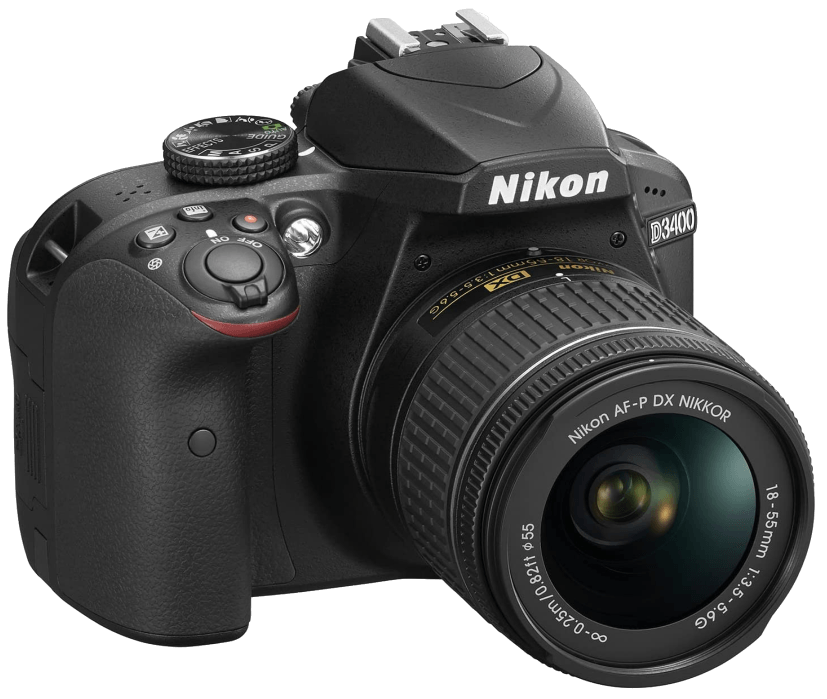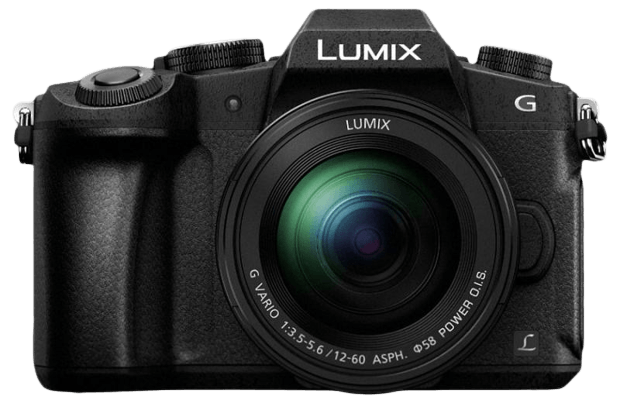Nikon D3400 vs Panasonic Lumix DMC-G80 Comparison
Nikon D3400

Panasonic Lumix DMC-G80

The Nikon D3400 outperforms the Panasonic Lumix DMC-G80 with a score of 61/100 compared to 58/100. Both cameras were released in 2016, with the D3400 announced on August 17th and the G80 on September 19th. They share similarities in size, with the D3400 measuring 124 x 98 x 76mm and the G80 at 128 x 89 x 74mm.
The D3400 has an advantage with its lighter weight of 445g, compared to the G80’s 505g. This makes the Nikon camera more portable and easier to handle during photography sessions. On the other hand, the Panasonic G80 is a mirrorless camera, which provides a more compact and modern design compared to the D3400’s DSLR structure. However, this comes at a higher launch price of $900, while the D3400 was introduced at a more affordable $650.
Taking these factors into account, the Nikon D3400 proves to be a better option for those prioritizing weight and affordability, while the Panasonic Lumix DMC-G80 may appeal to those who prefer a mirrorless camera with a sleeker design.
Nikon D3400 vs Panasonic Lumix DMC-G80 Overview and Optics
The Nikon D3400 wins the optics comparison with a score of 65/100, compared to the Panasonic Lumix DMC-G80’s score of 57/100. Both cameras share common specifications such as a CMOS sensor, as well as distinct processors – the Expeed 4 for the Nikon D3400 and the Venus Engine for the Panasonic Lumix DMC-G80.
The Nikon D3400 has a higher megapixel count of 24.2, while the Panasonic Lumix DMC-G80 has 16 megapixels. This means the Nikon D3400 captures more detail and produces higher resolution images. Additionally, the Nikon D3400 has a larger sensor size (APS-C) and a higher DXOMARK score of 86 for the sensor, compared to the Panasonic Lumix DMC-G80’s Micro Four Thirds sensor size and DXOMARK score of 71. The larger sensor and higher DXOMARK score contribute to the Nikon D3400’s superior image quality.
However, the Panasonic Lumix DMC-G80 has a few advantages over the Nikon D3400. It has a faster shooting speed of 9 frames per second, compared to the Nikon D3400’s 5 frames per second. This makes the Panasonic Lumix DMC-G80 more suitable for action photography. Moreover, the Panasonic Lumix DMC-G80 has image stabilization, while the Nikon D3400 does not. This feature helps reduce camera shake and improve image sharpness.
The Nikon D3400 is better in terms of image quality and resolution due to its higher megapixel count, larger sensor size, and higher DXOMARK score. On the other hand, the Panasonic Lumix DMC-G80 excels in shooting speed and image stabilization. Therefore, the Nikon D3400 is more suitable for photographers prioritizing image quality, while the Panasonic Lumix DMC-G80 is better for those who value shooting speed and stability.
Nikon D3400 vs Panasonic Lumix DMC-G80 Video Performance
When comparing the video capabilities of the Nikon D3400 and the Panasonic Lumix DMC-G80, both cameras have a video score of 56/100. This means that neither camera has a clear advantage over the other in terms of video performance. Both cameras share some common specifications, such as the absence of built-in time-lapse functionality.
The Panasonic Lumix DMC-G80 has superior video resolution with 4K capabilities, offering max video dimensions of 3840 x 2160. This is a significant advantage over the Nikon D3400, which only offers Full HD resolution with max video dimensions of 1920 x 1080. The higher resolution of the Lumix DMC-G80 allows for more detailed and sharper video footage.
On the other hand, the Nikon D3400 has a higher max video frame rate of 60fps, compared to the Lumix DMC-G80’s 30fps. This means that the D3400 can capture smoother video footage, especially in fast-moving scenes or when slow-motion effects are desired.
Taking these factors into consideration, the Panasonic Lumix DMC-G80 is the better choice for those seeking higher video resolution and detail, while the Nikon D3400 may be more suitable for those looking for smoother video footage with a higher frame rate. Given that both cameras have the same video score, the decision ultimately comes down to the individual user’s priorities and preferences in video performance.
Nikon D3400 vs Panasonic Lumix DMC-G80 Features and Benefits
The Panasonic Lumix DMC-G80 outperforms the Nikon D3400 in features, scoring 70/100 compared to the D3400’s 54/100. Both cameras have a 3-inch screen, but the G80’s screen resolution is higher at 1,040,000 dots, providing a clearer display than the D3400’s 921,000 dots. Neither camera has GPS capabilities.
The G80 surpasses the D3400 with its touchscreen and flip screen features. The touchscreen allows users to navigate menus and settings more efficiently and intuitively. The flip screen enables versatile shooting angles, particularly useful for vlogging and capturing creative compositions.
In terms of connectivity, the G80 takes the lead with its built-in WiFi, allowing users to transfer images and control the camera remotely. However, the D3400 does have an advantage in this area with its Bluetooth connectivity, enabling a constant connection to a smartphone for seamless image sharing and remote control. The G80 lacks Bluetooth capabilities.
While the D3400 falls short in features compared to the G80, its Bluetooth connectivity offers an advantage for users who prioritize a constant connection to their devices.
Considering the differences in features, the Panasonic Lumix DMC-G80 is the superior camera, providing a higher screen resolution, touchscreen, flip screen, and WiFi connectivity. The Nikon D3400’s only advantage is its Bluetooth connectivity, but this is not enough to outweigh the G80’s additional features.
Nikon D3400 vs Panasonic Lumix DMC-G80 Storage and Battery
The Nikon D3400 triumphs over the Panasonic Lumix DMC-G80 in storage and battery with a score of 45/100 compared to the G80’s 21/100. Both cameras share similarities in storage, such as having one memory card slot and supporting SD, SDHC, and SDXC memory cards. However, the D3400 stands out with a remarkable battery life of 1200 shots, powered by its EN-EL14a battery type.
In contrast, the Panasonic Lumix DMC-G80 falls short with only 330 shots per charge, using a lithium-ion battery. Neither camera offers USB charging capabilities. The D3400’s superior battery life makes it a more reliable choice for extended shooting sessions, while the G80’s limited battery life may require frequent battery replacements or additional batteries for uninterrupted photography.
Considering the significant difference in battery life, the Nikon D3400 proves to be the better option in terms of storage and battery performance. The Panasonic Lumix DMC-G80, although sharing common storage features, lacks the endurance required for longer shooting experiences.
Nikon D3400 vs Panasonic Lumix DMC-G80 Alternatives
Still not ready to make a decision? Check out our other popular camera comparisons for inspiration:
